PASS IT ON weekly walkabout 20 Sunday 1st October 2023
Sidetracks And Detours
present
PASS IT ON
weekly walkabout Sunday Supplement 20
Sunday 1st October 2023
Editor´s desk logo It is just before seven a.m. here, on Lanzarote, and the dawn is breaking of another perfect day. If the weather is as good where you are, or even if it is not, I´m confident that when you sit down again for a light lunch you will find lots of exciting news items for you arts lovers to enjoy. Our much valued volunteer reporters have delivered stories of a Mozart Made In Machester, and also preview another Manchester Music Festival Event. It´s great to have Trevor Bannister kicking off his new season of jazz reviews with a piece on Pigott Playing Ellington. The listing agencies of Jazz In Reading and Music That´s Going Places deliver comprehensive lists of venues, dates and players who will be playing throughout the Uk in October. Notwithstandcing all the live events you might like to listen in to Steve Bewick playing Jazz on air, and serving it up as a plate of Hot Biscuits. Meanwhile, Ralph Dent points us to where pop music on the radio is BOOMing ! Peter Pearson also makes sure All Points Forward by directing to the embarkation points of some Transatlantic sessions, and no doubt Norman Warwick will offer some island insights from Lanzarote in the course of the voyage.


CONTENTS
Live Music
Mozart Made in Manchester.
preview by THE STOLLER HALL
The Vermont Symphony Orchestra
preview by MANCHESTER MUSIC FESTIVAL
Agbeko review by RIBBLR VALLEY JAZZ AND BLUES FESTIVAL
Live Jazz
Pigfoot Plays Ellington
review by TREVOR BANNISTER
Judy Kerr at Pangbourne Jazz Club
review by JAZZ IN READING
October Listings
preview by MUSIC THAT´S GOING PLACES

Jazz In The Air
Hot Biscuits previewed by STEVE BEWICK
Pop Music On The Radio
Boom Radio by RALPH DENT
Researching History
Sweeping The Dust off Dusty Pages by MICHAEL HIGGINS
A Reader´s Perspective
Compare And Contrast by PETER PEARSON
Island Insights
Art is an asset to the island
Lancelot,….. a white knight on a steed
Hats Off To Larry
by NORMAN WARWICK


Live Music
MOZART MADE IN MANCHESTER
preview from The Stiller Hall
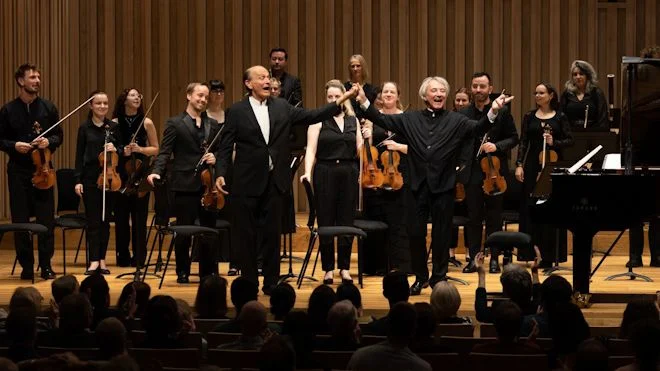
MANCHESTER CAMERATA:
MOZART, MADE IN MANCHESTER
06.10.23, 7.30pm
Tickets: £24.50 – £39.50, students £5.50
Mozart Made In Manchester Camerata (left) returns to The Stoller Hall to continue their full series of Mozart’s Piano Concertos with composer Gábor Takács-Nagy and soloist Jean-Efflam Bavouzet, this time going all the way back to the start of Mozart’s composing life.
Featuring pieces written entirely before the composer’s fifteenth birthday, this programme celebrates both the beginnings of his Concertos (which would later go on to be recognised as some of Mozart’s finest achievements) but also his earliest Overtures, including music from Apollo et Hyacinthus, an opera he wrote at the tender age of eleven!
“the panache and punch we have come to expect from the pairing of Gábor Takács-Nagy and Jean-Efflam Bavouzet” Bachtrack
“simultaneous virtuosic brilliance and thoughtfulness” The Arts Desk on Jean-Efflam Bavouzet


Live Music
event preview by Manchester Music Festival

The Vermont Symphony Orchestra’s Jukebox Quartet (left) invites the public to experience community art-making in real-time at their upcoming “Color Theory” concerts, which will bring together the musical and visual arts in a one-of-a-kind experience. This concert series will be held on October 20 at Higher Ground in South Burlington, October 21 at Roots Studio Space in Rutland, and October 22 at Helmholz Fine Art in Manchester.
“Color Theory” promises an unforgettable evening, merging the worlds of music and visual art. As the music unfolds (performed by quartet members Brooke Quiggins-Saulnier and Ben Lively on violin, Stefanie Taylor on viola, and John Dunlop on cello), audiences will witness live painting by the acclaimed Haitian/Vermont artist, Julio Desmont. His brushstrokes will dance across the canvas, creating a new work in real-time.
The music is vibrant and evocative, with pieces by Britten, Montgomery, Glass, Meyer and more – and the entire concert is interactive. At times, each quartet member will be trading out their bows for brushes. Toward the end of the evening, audience members will be invited to leave their own mark on the painting for a truly communal artistic experience. The paintings from each of the three concerts will be sold via online auction in November and December. The October Jukebox series is generously sponsored in part by Vermont Humanities.

Live Music
AGBEKO
SATURDAY 21ST OCTOBER
preview by Ribble Valley Jazz And Blues Festival

Agbeko embody a heady concoction of Afrobeat, psych-rock, Ethiojazz and Protest Song. Channelled through an onslaught of horns, irresistible grooves and powerful lyrics, Agbeko’s songs strive to call out corruption and embolden the collective pull towards societal change and healing in present times. They are the soundtrack for a congregation revelling upon a world teetering on the edge of collapse.
Drawing as equally from Fela Kuti and Mulatu Astatke as they do from Led Zeppelin and Woody Guthrie,
‘Agbeko are their own force of nature, with a message, an understanding and an consitent ability to erupt a dance floor.’ (Groovement)
We’ve just had Deafhaüs confirmed as support!
Deafhaüs, a genre-defying band hailing from Manchester, blends British nu-jazz and Afro-rock to create a unique and infectious sound that paints an accurate depiction of the city’s gritty industrial soul.


Live Jazz
PIGFOOT PLAYS ELLINGTON
Progress Theatre, Friday 15 September
review by TREVOR BANNISTER
Pigfoot areChris Batchelor trumpet/cornet, James Allsopp baritone saxophone/bass clarinet, Liam Noble keyboards and Paul Clarvis drums
As I walked home from the opening concert of the Jazz At Progress new season on Friday 15 September, with my head swirling with the sound of Duke Ellington’s music, I couldn’t but marvel at how Pigfoot, a four-piece band with obvious limitations in instrumentation, could so successfully capture the sound and spirit of the great man with such authenticity.
Duke himself would have been proud of the achievement. Clearly, Pigfoot have lovingly immersed themselves in the tradition of Ellingtonia – theman, the music and the host of characterful figures who formed his orchestra.
An array of mutes scattered on the stage gave a clue to the range of effects Chris Batchelor can conjure from his cornet and trumpet. His whoops and growls were every bit as sensational today as they must have been nearly a century ago when legendary bandsman like Bubber Miley and Cootie Williams launched the technique on unsuspecting Cotton Club audiences. However, Batchelor’s superb breath control and exquisite lyricism on the seldom heard cornet was even more impressive; an echo of the wonderful Arthur Whetsol who graced the early Ellington orchestra.
James Allsopp, doubling on baritone saxophone and bass-clarinet has a remarkable range and facility on each instrument, a spectrum of sound from Harry Carney’s sonorous bottom tones, through Ben Webster’s breathy tenor to the poise of Johnny Hodges gorgeous alto. At times one could even detect a likeness to John Coltrane at his most poignant. There are few musicians around who can handle these monster-instruments with such ease and with so much depth of feeling. Allsopp’s huge sound really hits the soul when an earthy groove is called for.
Liam Noble drew on the full resources of his keyboards to fulfil a multiple role within Pigfoot. As well as serving as the ‘piano player’, as Duke Ellington liked to describe himself, and ‘walking’ the bass, he created the marvellous orchestral backdrops to give each piece its true Ellington flavour. When called for solo duties, his ‘electronic’ clarinet added a distinctive voice to the front line.
Duke Ellington used to describe Sonny Greer as ‘our reluctant drummer’ because he didn’t like to take solos. Instead, he used his skills, honed in stage shows backing dancers and acrobats, to support individual soloists with colourful and perfectly placed percussive effects and to lay down a driving beat behind the full ensemble. Paul Clarvis fulfilled this role perfectly, though unlike Greer who surrounded himself with drums, vibes, tympani, chimes and even a gong, he uses a minimalist drum kit.
For all his remarkable gifts and the accolades he received from the great and the good, Ellington frequently came under fire for the programming of his concerts. Critics and fans alike would complain that there was ‘too much old material’ or conversely, ‘too much new stuff’; ‘too many solos and not enough from the full band, ‘too many interminable suites’ and worst of all … ‘too many drum solos. Rarely, if ever, did Ellington please ‘all of the people, all of the time’.
To my mind, Pigfoot, got the balance just right – a blend of familiar classics leavened with more obscure items, spanning the breadth of Ellington’s remarkable career. Some pieces were first recorded with the full orchestra, others with small groups, while some fell outside the usual band umbrella altogether as one-off studio encounters. Bringing Ellington together with various guest stars.
‘Rockin’ in Rhythm’ dating from 1929 and evoking the heady days of Harlem’s Cotton Club set the programme in motion. Not surprisingly it remained in the ‘book’ with various modifications for the whole life of the Ellington band.
A spell-bindingly beautiful ‘La Fleurs Africaine’ moved things forward to 1962 and the studio session with Ellington on piano, Charlie Mingus bass and Max Roach drums that produced the ‘Money Jungle’ album. Pure magic!
In complete contrast, ‘Such Sweet Thunder’, the title track of Ellington’s 1957 Shakespearian Suite, summoned every ounce of power and energy available to evoke the nefarious machinations that underlie this tragedy. All great fun and oozing with sleaze.
‘Just Squeeze Me’, first recorded in 1941 by an Ellington small band led by Rex Stewart, bounced along in joyful fashion to a gentle shuffle rhythm with Chris Batchelor’s cornet well to the fore.
‘In a Sentimental Mood’ was one of Ellington’s earliest hit songs. This version, however, dated from a classic studio meeting with John Coltrane in 1962. One was impressed by the sense of stillness and quiet reflection the performance created and the extraordinary Coltrane-like tonal qualities James Allsopp drew from his bass-clarinet.
‘It’s a case of “Duke Ellington meets James Brown”,’ Chris Batchelor warned as Liam Noble, aided and abetted by Paul Clarvis, laid down an irresistibly funky groove to launch ‘Blue Pepper,’ surely the most spicey of all the tracks on the magnificent ‘Far East Suite’ of 1965. Topped by growling trumpet and wailing baritone the number closed the first set in a sensational manner.
‘East St Louis Toodle-OO’ opened the second set and took us right back to Ellington’s earliest days and the signature tune he used until he adopted Billy Strayhorn’s ‘Take the “A” Train’ in the early 1940s. Its menacing qualities are strangely mesmerizing. I can only imagine that it must once have accompanied a dramatic dance routine at the Cotton Club.

Pigfoot (right) stepped slightly out of the Ellington pocket on ‘The Mystery Song’. Although the number was recorded by the Ellington Orchestra in 1931, it is better known as a track on the Steve Lacy/Don Cherry album ‘Evidence’ from 1962. Played here with a Latin flavour, it swung along effortlessly in an open and invigorating style, allowing full rein for the musicians to express themselves.
The pared-down instrumentation of Pigfoot worked to perfection on ‘Mood Indigo’, one of Ellington’s most famous pieces. Liam Noble added an extra voice to the trumpet/bass-clarinet front line with an ‘electronic’ clarinet to enhance the plaintive beauty of the tune.
‘Klop’ is something of an Ellington curiosity, a polka from the ‘Uwis Suite’. In his album sleeve notes , Ellington recounts that his orchestra once played as the interval band for a Polka ball comprising eight polka bands. This short, snappy and thoroughly entertaining piece stands as a dedication to that bizarre event.
‘It Don’t Mean a Thing if it Ain’t got That Swing’ brought us back to more familiar territory. Amongst its many delights, Paul Clarvis’ drum breaks, Liam Noble’s groovy bass and James Allsopp’s astonishingly high note on the baritone, represented the absolute highlights.
Chris Batchelor’s thoughtful arrangement of Billy Strayhorn’s ‘Chelsea Bridge’, combined strands from Ellington’s ‘Warm Valley’ to create a tapestry of rich emotional depth. Again, all the resources of the limited instrumentation were used to tremendous effect.
Liam Noble unleashed a veritable storm of dust as he set the camels on a frantic rush across the desert. ‘Caravan’ may not have been written by Duke Ellington, those credits belong to his sometime valve-trombonist Juan Tizol, but no evening devoted to Duke would be complete without it. What better way to bring a wonderful evening of jazz to a tremendous climax.
Our thanks to Pigfoot for reminding us of Duke’s enduring but even more so for the superb quality of their musicianship. We really are blessed with some incredible talents in this country!
Thanks also to the Progress team, as ever warmly hospitable and helpful, who ensured that the new season of Jazz at Progress got off to the very best of starts.

Live Jazz
Trudy Kerr (vocals)
Backed by the Pangbourne Jazz Club rhythm section:
Terry Hutchins (guitar) | Andy Crowdy (double bass)
Jim Pollard (piano) | Brian Greene (drums)
preview by Jazz In Reading
Trudy is renowned as one of the UK’s finest jazz vocalists. Mojo Magazine says of her singing ‘Trudy Kerr is the genuine article – She is a Joy!’ All About Jazz has described her as ‘100% real jazz musician with fluid phrasing and a mellifluous, warm and sensuous tone.’
We are delighted to welcome Trudy to Pangbourne Jazz Club, it is a real coup to get yet another of the Best on the British Jazz scene.

Born in Australia, Trudy (right) moved to the UK in the early 1990’s to pursue a career in Jazz. She got her big break when Ronnie Scott asked her to perform at his Club and Trudy’s career grew from there. She has performed at many major venues and festivals in the UK as well as engagements in Europe, her homeland Australia and the Far East.
To date Trudy has released ten albums on the Jazzizit Record Label (The Rhythm of Life 2012, Reunion 2010, Like Minds 2009, Déjà vu 2007, Jazz for Juniors 2006, Cloudburst 005, My Old Flame 2001, Day Dream 2000, Trudy 1998 and Sweet Surprise 1997) and has collaborated both live and in the studio with world class musicians including Mulgrew Miller, Jan Lundgren, Georgie Fame, Bob Dorough, Michael Garrick, Acker Bilk, Jamie Cullum, Geoff Gascoyne (her husband), Tom Cawley, Seb de Krom, Jim Mullen plus many more.
To celebrate her extensive discography reaching double figures, Jazzizit Records have just put the finishing touches to a Trudy Kerr Compilation called Contemplation. It consists of fifteen tracks of some of Trudy’s greatest recorded moments and will be available for a Christmas release.
On a live performance you’ll hear ‘her highly skilled nimble voice’ (Steve Rubie, 606 Club, Chelsea, London) deliver a diverse repertoire that could include compositions by Chick Corea, Horace Silver, John Coltrane, Wayne Shorter, Fats Waller, Bill Evans, Antonio Carlos Jobim and of course the Great American Songbook standards.
She is fast becoming a prolific lyricist having penned many vocalese (putting words to instrumental solos). Her performance of vocalese has been described by Jazzwise Magazine as ‘stunning and virtuosic with machine-gun fire delivery of the melodic line.’ Trudy’s recent album with Geoff Gascoyne, The Rhythm of Life, was also full of exciting new repertoire penned by the husband and wife team. Jamie Cullum describing the songs as ‘new standards of today’.
Trudy is currently working on an original song project with pianist Andrea Vicari and hopes to release the album in the summer of next year.
She is also a very successful vocal coach holding teaching posts at Trinity Laban, Guildhall School of Music and Drama, Chichester University and London Centre of Contemporary Music where she coaches the up and coming vocal stars of tomorrow in various genres.
As well as performing an eclectic mix of music on her gigs, she also performs an outstanding set celebrating the music of Chet Baker and Gerry Mulligan with her regular trio, Tom Cawley (piano), Geoff Gascoyne (bass) and Sebastian de Krom (drums), alongside two of the UK’s finest musicians, Dick Pearce (trumpet) and Derek Nash (tenor saxophone).
Additionally, she has developed a Children’s Show called Jazz for Juniors and has toured schools, festivals and venues around the UK.
Trudy also presented The Jazz Hour weekly on BBC Radio Southern Counties alongside veteran presenter Roger Day.
Live Jazz:
Jazz at Progress Friday 6 October 2023
preview by Jazz In Reading
Partners in Time –
Historic Sax/Trumpet Partnerships
Friday 6 October | Progress Theatre, Reading (details below) | 7:30pm |
£19.00 (£17.00 concessions, £10 under 16) plus maximum 5% booking fee
Karen Sharp saxes
Stuart Henderson trumpet/flugelhorn
Leon Greening piano
Raph Mizraki bass
Simon Price drums
Celebrating the incredible jazz music created by the great saxophone and trumpet partnerships of the past including…
Miles Davis/John Coltrane | Gerry Mulligan/Chet Baker
Pepper Adams/Donald Byrd | Clifford Brown/Harold Land
Lee Morgan/Joe Henderson | Dizzy Gillespie/James Moody
… we have our own sax/trumpet partnership featuring Karen Sharp, the first lady of UK jazz on the tenor and baritone saxes, partnered with Stuart Henderson, the master of trumpet and flugelhorn. The rhythm section is led by the amazing Leon Greening on piano, supported by Raph Mizraki on bass and Simon Price on drums.
Karen Sharp‘s career took off when she was asked, in the early 2000’s, to join Humphrey Lyttelton’s band with whom she toured the UK and Europe for four years. During this period Karen also worked hard to establish her own quintet, touring the festival and club circuit and recording the first of many albums as a leader. ‘Humph’ persuaded her to take up the baritone sax and she hasn’t looked back since, winning the British Jazz Awards for best tenor saxophonist on numerous occasions and appearing as a nominee in the rising star category of the Downbeat Critics Poll for baritone sax in 2018 and 2019.
Stuart Henderson served from 1983 to 2005 in the military and was principal trumpet of The Scots Guards Band in Her Majesty’s Household Division. He played many times for the Royal Family and at State occasions all over the world. Since leaving the services Stuart has become a fixture on the UK jazz scene appearing with many of the country’s finest jazz musicians. He leads various small groups, is musical director of the Remix Jazz Orchestra and has played at many jazz festivals.
Leon Greening is a truly impressive jazz pianist. Since being named runner up in the Sun Alliance Young Jazz Musician of the Year Awards in 1999 he has gone on to establish an enviable career on the UK jazz scene. His straight ahead, swinging, hard bop style, inspired by the likes of US greats Bud Powell, Wynton Kelly and Bobby Timmons, has made him a favourite on the jazz scene for over two decades. He has been heard with many of the leading UK jazz artists starting in his younger days with such icons as John Dankworth and Peter King and many others since.
Music That´s Going Places preview by Rob Adams
October sees the launch of a new band – so new it hasn’t yet played together.

First, though, the Scottish National Jazz Orchestra’s latest tour featuring pianist Geoffrey Keezer ends in Edinburgh on Sunday 1st, although there’s still time to catch the Glasgow and Aberdeen concerts. The Art of Arranging features Keezer’s sterling piano, composing and arranging talents in a programme that adds Charlie Parker, John Coltrane, Wayne Shorter, Jaco Pastorius and Robert Burns pieces to the pianist’s Southeast Alaska Suite and a brand new Keezer composition.
Also on Sunday 1st, if you’re in Glasgow, don’t miss Polish guitarist Przemyslaw Strączek’s quartet playing for Jazz at Merchants House. Strączek’s adventurous style has been praised by online jazz guide All About Jazz and his quartet, which features on his latest album, Fig Tree, is typical of the high quality currently being produced by the Polish jazz scene. You can also catch them in Aberdeen on Thursday 5th.
Enthusiastic responses to their September concerts, New Focus (aka pianist Euan Stevenson and saxophonist Konrad Wiszniewski, left) bring The Classical Connection to West Kilbride on Friday 13th and Linlithgow on Saturday 14th. Brilliant playing across a range of music from Mozart to Miles, Strayhorm to Satie and more, plus nuggets of information and insight make this an entertaining and highly rewarding experience
The future of jazz in Scotland and beyond will be onstage when the Tommy Smith Youth Jazz Orchestra plays at St Bride’s in Edinburgh on Saturday 14th and Drygate in Glasgow on Sunday 15th. Dozens of musicians have now emerged from the orchestra to establish themselves and make national and international reputations, and the class of 2023 promises to follow suit.
One graduate of TSYJO is Peter Johnstone who tours his brand new International Organ Quartet to Aberdeen, Glasgow, Edinburgh, Perth and Ambleside from Thursday 19th, finishing up at Ronnie Scott’s in London on Tuesday 24th. This is a dream team of a band, featuring New York vibes virtuoso Joe Locke, Tommy Smith on saxophone and Alyn Cosker on drums alongside Pete on Hammond organ, and it promises to deliver strong melodies and deep grooves with huge passion and excitement.
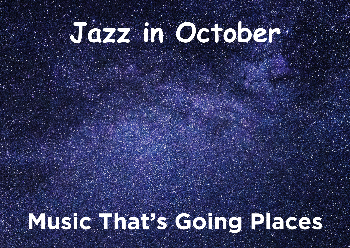
Jazz Listings Of Music That´s Going Places
Jazz In October 2023
Aberdeen
Blue Lamp
Sun 1: Scott Cruickshank Band plus Melodie & the Chillers
Thu 5: Przemysław Strączek Qrt
Thu 12: Brian Molley Qrt
Thu 19: Peter Johnstone International Organ Qrt
Thu 26: Umezu Kazutoki, KIKI BAND
Crail
Crail Community Hall
Sun 22: Hockerill College Orchestra
Dundee
Woodlands Hotel, Broughty Ferry
Sat 21: East Coast Jazzmen/Havana Swing, Sunnysiders, Steve & Sheila Gaughan
Edinburgh
The Jazz Bar
Sun 1: Anna Vanosi
Thu 5: Kershaw-Steele Qnt
Fri 13: Boptimism
Thu 19: Colin Steele’s Kings of Swing
Thu 26: Ben MacDonald’s Legit
Outhouse
Thu 5, Thu19: Playtime tbc
Queen’s Hall
Sun 1: Scottish National Jazz Orchestra with Geoffrey Keezer
Fri 20: Peter Johnstone International Organ Qrt
St Bride’s
Sat 14: Tommy Smith Youth Jazz Orchestra
Traverse Theatre
Mon 2: Steve Kettley & Savourna Stevenson
Mon 9: Noovision
Mon 23: Corrie Dick
Glasgow
Drygate
Sun 15: Tommy Smith Youth Jazz Orchestra
Merchants House
Sun 1: Przemysław Strączek Qrt
Royal Conservatoire of Scotland
Fri 20: Peter Johnstone International Organ Qrt (1pm)
Greenock
Beacon Arts Centre
Thu 26: The Big Easy
Linlithgow
St Peter’s Church
Sat 14: New Focus: The Classical Connection
London
606 Club
Mon 2: Phil Mumford’s Thunderthumbs
Tue 3: Barry Green Trio with Iain Ballamy
Fri 6: Bruce Adams with Alan Barnes
Sat 7: Brandon Allen Qrt
Mon 9: Fraser Smith Qrt
Wed 11: Guille Hill
Sun 15: Gareth Lockrane Big Band (1:30pm)
Sat 21: Benn Clatworthy
Sun 29: Zoe Francis with Jim Mullen (1:30pm)
Ronnie Scott’s
Sun 1: Judy Niemack
Mon 2 – Wed 4: Chucho Valdes Qrt
Thu 5: Art Themen Qrt
Fri 6: Nils Petter Molvaer Stitches
Sat 7: Rymden
Mon 9: Ronnie Scott’s Jazz Orchestra
Mon 16, Tue 17: Christian McBride’s New Jawn
Fri 20, Sat 21: Theo Croker
Tue 24: Peter Johnstone International Organ Qrt
Thu 26: Rob Luft
Sun 29: Georgina Jackson’s Sass and Brass
Nairn
Nairn Community Centre
Thu 19: Rossano Sportiello
Perth
Perth Theatre
Sat 21: Peter Johnstone International Organ Qrt
West Kilbride
Village Hall
Fri 13: New Focus: The Classical Connection


Jazz On Air
Hot Biscuits preview by STEVE BEWICK
Next week we feature a review by my colleague, Gary Heywood-Everett. of contemporary vocalist Laura Zakian‘s recent CD, `Dreaming Life` Also featured in our jazz broadcast is a warning from Stephan O’Goodson about Gloomy Sundays. We will also include Top of the Mercury lights, a victory march from Ezra Collective, Geoffrey Keezer Trio with, `All The Things You Are.` We will look at the Buxton International Festival 23 from performances by Dale Storr, solo piano, Shez Raja, Quiverish and, finally, Ni Maxine and Strange Love. If this looks interesting please PASS IT ON and tune in on www.mixcloud.com/stevebewick/ 24/07

Pop Music On The Radio
more than pop music for old folks
Boom Radio review by RALPH DENT
I am aware that Norman and the team pointed their readers in the direction of Boom Radio quite some time ago. I also know that Boom Radio deliver an excellent newsletter service and now I have noticed that The Times champions them too. in article recently written by Patricia Nicol.

David Hamilton left) is a throwback, she said to open her piece, and an innovator. A throwback because with every Sha-la-la-la and every Wo-o-wo-o of its playlist it’s yesterday once more. The infant station targeting the 60-plus plays the once revolutionary sounds of the Fifties, Sixties and Seventies (although it mostly swerves punk). Another nod to yesteryear is its golden oldie DJs: “Diddy” David Hamilton, 85; Graham Dene, 74; and Simon “Our Tune” Bates, 76. Even Michael Aspel, 90, is hosting a one-off show next month. But Boom is also a wise yet agile innovator — it has no offices or studios and all its veteran presenters broadcast from their own homes, including the former pirate Roger Day, 78, from Spain.
And Boom, which launched in February 2021, is booming. In that short time it has built a loyal audience of more than 641,000. Listeners tune in for over ten hours, on average, each week. Its founders are two commercial music radio stalwarts: David Lloyd and Phil Riley. Lockdown gave them the impetus to pursue a hunch that older listeners felt cut adrift by BBC Radio 2 and its commercial rivals. All those stations were targeting a working, aged 30-59 audience — for advertisers that’s where the money is supposed to be. But Boom is proof there’s gold in them there not-over-the-hills too. “We are baby boomers, launching something in our sixties, to appeal to boomers. All of whom are still trying to live meaningful lives, yet often feeling the world is trying to pass them by,” Riley tells me via Zoom from Mallorca, where he is ostensibly on holiday. “A lot of our presenters felt as if they had fallen off the end of a conveyor belt.” Feedback from their listeners echoed these sentiments. “Many had given up on radio, feeling their days of having a station to call their own were behind them. Boom has re-energised radio for them.”
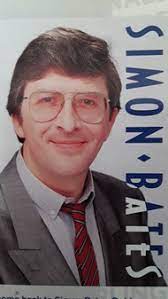
Having entered a time machine and spent the past week listening, I am not surprised by Boom’s success. Its experienced presenters nail radio’s special intimacy. “Welcome to my front room,” Bates (right) said last Sunday, as the Who’s My Generation faded out. “Today feels like the beginning of autumn, but it doesn’t matter because you can cuddle up to the radio.” Howard and Elaine in Oxford told him they had rearranged their plans around the show. “That’s really nice of you,” Bates said, beaming.

Hamilton broadcasts from his Sussex farmhouse, Judi Spiers (left) from Devon, Jenny Hanley (former Bond girl and children’s TV presenter on Magpie) from the south coast and Dave Jamieson from Edinburgh. None of this sounds London-centric and it has happened organically without any BBC W1A-style initiatives to target the nations and regions.
Boom does things differently from most stations because it follows the rhythms of its listeners’ lives. Its audience rises late, sticks around into the afternoon and peaks at the weekend. The presenters mostly do two-hour stints.
What surprised my youngish, by Boom standards, household (two early-fifties adults, a tween and a teenager) was how rarely the music made us cringe. Bates’s last show included Donna Summer, the Stones, Dolly Parton’s new cover of Let It Be and Peggy Lee’s The Folks Who Live on the Hill. It’s policy to play every song in full, so on Monday Nicky Horne played all six minutes of Dire Straits’ Private Investigations. Minutes later the new wave Scottish band Fiction Factory’s (Feels Like) Heaven led into Simon and Garfunkel’s Homeward Bound, then Johnny Cash’s I Walk the Line. Gems spanning 30 years. My personal listening highlight was Graham Nash (of the Hollies, then Crosby, Stills, Nash and Young) being interviewed on Riley’s show Choices. This included playing Suite: Judy Blue Eyes and sharing memories of Joni Mitchell and David Crosby. “What a guy!” my 14-year-old declared about Nash. “Is it wrong I’m enjoying Boom?”
No, because boomers are the original “generation radio”, who came of age with the birth of rock and pop, pirate and commercial radio in the late Sixties. Will my sons be so lucky? A recent report highlighted that while the UK remains a nation of radio listeners, the 15-24 audience has declined by 28 per cent over five years.
While execs scratch their heads about how to attract a new generation of listeners, Boom’s success shows the dangers of treating older ones disdainfully and the virtues of listening to your audience.


SWEEPING THE DUST OFF DUSTY PAGE
Teresa Reichl wields the brush:
essay by MICHAEL HIGGINS

While I was in Austria recently I picked up an article in the Tiroler Tagezeitung, (right) headed, ‘ Dusty School Lectures’ on why the young don’t read in our modern digitalised age. It concerned the ‘Cabaret’ or ‘stage artist’ turned inspirational teacher and slam poet turned podcaster, Teresa Reichl, and her internet themed output entitled ‘Obacht , i kann was (Careful, I can do something). It tackles the problem of getting young folk to read. Born in Bavaria in 1996 she loves reading herself and has a degree in German literature and philology. During the Pandemic she went online and in her videos she is said to ‘knock the dust from the classical canon’ and ‘scratch at the decorated surfaces of perennially favourite reading lists’. Her recent book, Muss ich das gelesen haben? (Must I Have Read This?) sets out her stall.

Do teenagers not like to read nowadays as modern views declare? Not so, says, Reichl. But they are put off reading some types of literature by the School canon. She admits that the statistics are depressing. One in four primary school pupils in Germany cannot read well, never mind the teenage statistics. The experience of literature should lead to increased intelligence, empathy and inner serenity and give the essential skills to progress in society. Books give confidence and a better understanding of the world we live in. Yet the school curriculum does not manage to do this, why?
According to Reichl this is because the modern education system is rigid in relying on the classics as worthy in their own right rather than presenting them as past works among so many other new writings. Schools can open up the classics to a new generation if teaching is done imaginatively through modern analysis of TikTok videos, Youtube clips or chat histories. From all these modern social interaction texting methods one can learn all the basics of textual analysis and apply them to higher literary writing, pointing to author, text, type, content and intent. Reichl has 61,000 followers on TicTok
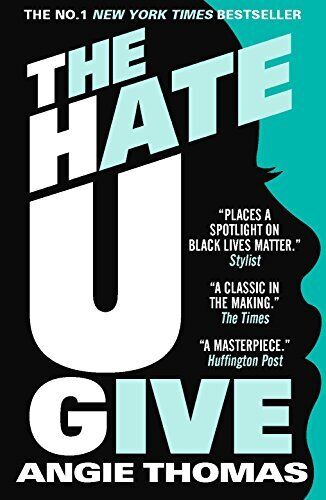
photo 3 And once one has approached this, one can approach the classics or any other type of written story. And the classics themselves? Take Goethe’s Werther – ‘it has too much male egocentricity’. In fact most of canonical literature seems to her ‘ white, masculine and heterosexual and privileged while modern life is not so limited. And when heterosexuality is not a theme, as in Thomas Mann’s Death in Venice, homosexuality is associated with paedophilia and hidden behind asceticism. And though Reichl says she likes Thomas Mann, she adds that ‘nobody needs a story of a guy who falls in love with a 14 year old and makes a fool of himself’. But that is now, what about then?
How times have changed. I recall Thomas Mann’s brother , Heinrich Mann’s book ,Professor Unrat (Professor Rubbish or Filth) filmed as The Blue Angel and starring Marlene Dietrich. The easily seduced professor tries to stop his students wasting their evenings in the rather lowbrow Blue Angel nightclub and in desperation visits the club himself to face off the leading siren. Yes, he falls for her charms and she makes a fool of him, fleecing him of money and reputation. I am sure that would have gone down well on my reading list in high school. But social mores are not what they were.
And much of what this young lady says, we said back in my day high school ,– not enough modern poetry, music, sentence structures and themes. Yet I managed to survive ‘ the dusty lectures from the tired old canon’. But then my mother taught me to read before I started school and I have loved reading anything ever since – well not so much James Joyce and any sort of stream of consciousness writing but that is by the by. I just took school literature lessons and homework for what it was and supplemented it with what I loved to read. The homework reading was a hard slog but one had to set one’s masculine chin to the bar and bear it. Oh that literary dust.
And the masculinity! Fraulein/Frau Reichl probably does not like being tagged ‘Fraulein’ or ‘Frau’ (Miss/Mrs) but I am not sure what the German equivalence of Ms is. I am after all an older Englishman survivor of all my dusty German lessons and all that old-fashioned grammar. I recall that the title Fraulein had been abolished by the powers that be since but I hear ‘Fraulein!’ shouted all the time when someone wants to get the waitress’s attention in a bar or cafe. It is hard being a man trying to understand all this. But she does say the portrayal of women in classical reading lists does not stand up well with your modern feminist reader. So how should we proceed through this dusty and tired way of writing stories? She gives us a list of six books we should start off with:
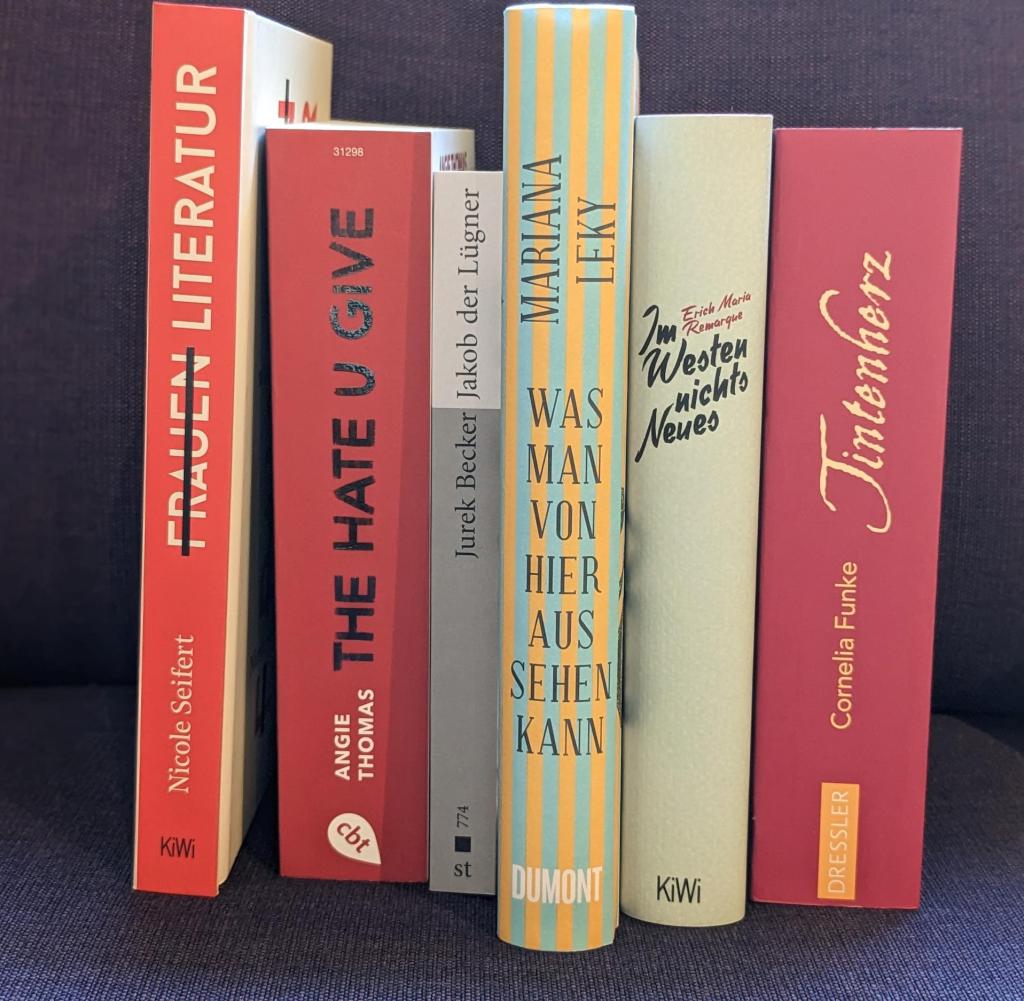
Frauenliteratur (Female literature) by Nicole Seifert
The Hate U Give by Angie Thomas
Jakob der Luegner (Jacob the Lier)by Jurek Becker
Was Man von hier aussehen (What you can See from Here )by Marianer Leky
Im Westen nichts neues (All Quiet on the Western Front) by Erich Maria Remarque
Tintenherz (Inkheart) by Cornelia Funk

Angie Thoma (left) is, featured on this liat and writes in English and is praised by Reichl for her racist black lives matter theme. Of the other five German language books only Remarque’s novel set around the First World War will be familiar in translation to English Readers, especially for its cinema versions. For Reichl, Remarque encapsulates youth and the experiences of young hope going to war. The German title can also be translated as ‘Nothing new in the West’ and is a sentence from the end of the book. The central character, Paul, is dead and there is nothing new in the West to report today. Such is war. Such is life. Tintenherz is for people who love books and magically get transported in and out of one called ‘Inkheart’. Was Man von hier aussehen follows the the fabled village of ‘Westerwald’ where no one has a name, only an occupational description. Jakob der Lueger is a romanticist in a Jewish Ghetto who lies to boost hope. Reichl notes that the book employs an unusually long sentence structure.
But Teresa does have a pertinent point: How do you make literature of a century or more ago interesting in the days of modist modernist views, television, computers and mobile phones, with formal grammar on one hand and short-cut text -speak on the other? Well, in this she does her very best using all her skills as a cabaret artist in the vein of her stage heroes Constanz Lindner, Christian Springer and Michael Altinger, by summarizing classical works in 55 seconds at breakneck speed only interspersed with sipping wine spritzer. I have listened in to these broadcasts and find her German too fast for my foreign brain to follow with comprehension. Reading her at my own speed is fine however. She is a lively lass and clearly loves the classics she is trying to dust down for the young she clearly wishes to entice into good literature. For as she says: There is literature out there – by and about everyone- all stories are worth telling.’


A Reader´s Perspective
All Points Forward
Compare And Contrast by PETER PEARSON
Americana is by definition an American term and over here in the UK whilst the likes of you and I embrace the over-arching title, the vast proportion of music lovers here in the UK would not recognise it.
We tend to think of folk, country-maybe country rock, celtic and world music as approximations for what the Americans call Americana music.

Richard Thompson (left) is referred to as folk musician over here but would fall squarely into Americana in the States.
So when you ask about UK performers who might appear on the same playlists as our American friends I look beyond singer songwriters such as Elton John and Cat Stevens.
The trouble is I then start to struggle a little when it comes to quality. So many of the UK performers I see at concerts fill their sets with covers of American songwriters. There are of course exceptions and thinking of singer songwriters in the Americana tradition I would name:

Dougie Maclean, (right) the Scottish singer songwriter who collaborated with Kathy Mattea and featured in a 1997 BBC aired documentary.
Both he and Kathy feature in Transatlantic Sessions 1.Caledonia and Ready For The Storm are two of his standouts from his substantial output.
Cara Dillon ) and Julie Fowlis are,respectively an Irish and singer and a Scottish singer, (starting points might be irrelevant when sustaining a legacy) singer songwriters in the celtic tradition-also featured in Transatlantic Sessions. Cara is heavily featured on the forthcoming Martin Simpson / Thomm Jutz (of Brace Cooper Jutz whom I have previously introduced on these pages) produced Nothing But Green Willow album.
Maura O’Connell and Karen Matheson are fine interpreters of traditional Irish and Scottish music but are not songwriters.
Paul Brady is an Irish singer songwriter, also featured in TS, who has a substantial catalogue.
Teddy Thompson-son of Richard-is also a fine singer songwriter who I feel should be on the playlist.
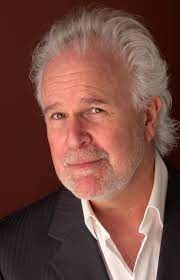
James Grant a Scottish singer songwriter featured in TS 2 is heavily included on my brothers playlist-but my brother hasn’t a clue what Americana music means. He would call James Grant, who appears at Bury Met again in Novemberis referred to by brother as simply a singer-writer
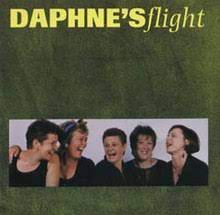
I know Norman like Chris While (shown right in an occasional incarnation with Daphne´s Flight, who also include Julie Matthews, who I know Norm categorises as Americana) Norman and I was pleasantly surprised to While her hold her own when appearing in the BBC aired Back To Beth’s, a Nashville house concert in which a stellar list of mainly American singer songwriters gather in Beth Neilsen Chapman’s house to perform solo acoustic
.
So that’s my list and I guess you would group most of them as being in the Celtic tradition.


Island Insights
ART IS AN island asset by Norman Warwick

The tiny village of Mancha Blanca, so dwarfed by the natural edifice from which it takes its name, and by the church that was built there (right) , was at its busiest recently in the week from 11th to 15th September, as the annual Artisan Fair was taking place on the fields around the church. In six of eight years since we have lived on the island, we have visited this fair in all but covid times. We have bought items including beautifully crafted small items of furniture and sent them over to our son in South Korea,. Andrew has his own woodworking room over there, and has made items such as a dressing table for his twelve year old daughter, and items for his wife and we are certain he would love this market place.
Because it enjoys temporal and spatial proximity to the religious events at the church, many hundreds of holidaymakers mix freely with the local population at this yearly Arts and Crafts Fair at Mancha Blanca. All this is combined with the traditional ´Music Folklore Festival¨ celebrated every evening. On display is a variety of local handicrafts both traditional and modern, including pottery, embroidery, weaving, leather-ware, hats and baskets of palm leaves, wood carving and jewellery made from olivine a local semi-precious stone found in volcanic rock.
Food stalls and restaurants serve fairgoers also with the best of local cuisine; “Saborea Lanzarote” fish and meat dishes cooked Canary-style, or delicious tapas with cheeses and unique wine from grapes cultivated in volcanic soil as can be stretching away to far horizons on the bodegos on La Geria, Islanders, and tourist too, love the traditional “gofio” cereal, the food of the ancient Guanche inhabitants of the Canaries.
In previous years we have visited the fair during the day. When the bunting is fluttering under clear blue skies, restaurants are doing a roaring trade as various dignitaries wander the exhibition tents. There are short ad hoc concerts delivered, and sometimes there have been wandering minstrels delivering folk lore music, including every few minutes a different version of the ubiquitous Gauntanamera
This year, however, we were seduced, by the afore-mentioned traditional ´Music Folklore Festival¨ celebrated every evening, to visiting at a later time. The arena itself is open for the two days of Monday and Tuesday until late into the night, then on the Wednesday and Thursday it is closed during the day but opens at 5.00 pm and on Friday, its closing day, it is open from morning until late into the night.
So we chose Wednesday, and did not leave our home in the South Of The Island until 5-00 pm. The forty five minute drive to Manche Blanca takes us across the volcano road over Timanfaya. The views are extraordinary, colours changing hue as sun and white clouds glide above. We seemed to be the only car on the road, although day time tourist traffic is causing something of a controversy at the moment, as we reported in last weeks ´Pass It On, in our report Storm, Rages Over Mountans. To drive through the middle of the lava fields when they were as quite as this, though, was to be able to identify, at several points, the blue ocean in the distance as the sun drops diamonds down the coast is wonderful.
We pass peaks and craters, and the magnificent volcano-visitors centre, with its high tech displays and examinations and readings of seismic activity.
We then come to a t-junction. Turn left and you will be heading through the beautiful town of Tinajo as you head down the coast to Santa, a surfing ´hang-out with a quaint, working fishing harbour. We turn right which would take us on to the La Geria vineyards, but we take a sharp left before then and drive down an unmade road that leads us up into open land, and have to drive along a bit of rough track to a massive free car park, itself on a bit of rough ground.
As we pull up to park we realise we are facing the mountain that gives this deceptively small village its name. “Mancha Blanca” means “white spot”, a reference to the white spots that one can see on the Caldera Blanca, the nearby volcano of the village. These white patches are due to the presence of lime in rocks of this volcano eruptions that predates the eighteenth century.
This incredible landscape could not be imagined by tourists who do not leave the main roads. It is effectively a very wide, two layered basin, agriculturally productive, at the foot of the mountain. Almost as if in the very plug hole of this basin stands the church, solid and steadfast, right by the bus stop and the site of the weekly vegetable market.
photo 9 Although the artisan market has not yet been open for an hour, the exhibitions, and fairgrounds for youngsters, are already busy. We sit at one of the outside bars church for a slow beer and forty five minutes or so later we head up the slight slope to the entrance to the exhibition.
Photo 3 This is really a collection displaying a huge range of arts and crafts that take place on Lanzarote, some of which have grown into commercial organisations but many of which remain, still a cottage industry. There is musch knitting, stitching and sewing and fastening and buttoning with some fantastic outfits in the local tradition still being made.
The artisan market is, like Lanzarote itself a strange combination of ancient and modern ideas imported and exported by boat and plane these days. Of course, there is a massive Canary Island around the world so ti shoulde be nor surprise that its impact should rebound outwards and homeward again.
photo 4 That makes for some eye catching pieces, such as variations of the Dreamcatchers, also called nets or dream traps, they were invented and widely used by the Ojibwe tribe. The territories of this tribe stretched from Canadian to North American regions. The development of the tribe through intermarriage and exchanges, in particular, allowed the diffusion of this object. On display here were pieces of all sizes in various textiles, all brightly coloured and hand made with love.
photo 5 As many of our music-loving readers will know, singer-writer Guy Clark was much in demand luthier, a craftsman who makes and repairs stringed instruments. Most luthiers specialize in working with one type of instrument. A guitar luthier will have. studied and trained in the art of guitar repair and construction. We have a wonderful Timple Museum in Teguise, which shows the history of timple-making on the island, and demonstrates in fascinating detail how these small ukelele-like instruments are created.
photo 1 At this year´s Artisan Festival was a stall inhabited by a local luthier from Estow Studios. Described as an innovative and sustainable project Estow relies on the use of wood and articles of natural origin to make their original quality instruments whilst preserving and improving the beauty the material. our son is a huge Guy Clark fan and plays the banjo, so when the luthier from Estow told us his starting price for an orginal nnd unique timple would be around 200 euros, we ear marked one for a few years time for our´boy´s´fiftieth birthday. We need to bear in mind, though, that postage and packing will probably double that price ! Maybe he´d settle for a plectron.
photo 6 photograph In terms of carpentry, instruments were not the only product on show. There were all sorts of home ´knick knack´ articles as we might have called them in the UK.. although aretfacts might be more apt. The balcony style show in the top right of our phot is very recognisable here on Lanzarote, and one such in Teguise a few years ago, created a perfect balcony scene for a strolling production through the City´s streets, of Romeo And Juliet.
photo 8 My wife was very interested in seeing some wool work. Dee sews, crochets, and knits (and she constaantly needles me) so she looked at an exhibition of rag dolls in hand-knitted clothes. Some of them reminded us of Statler and Waldorf, the two disagreeable old men rounding out the core group of the Muppets characters. Best known for heckling Kermit and Miss Piggy and other cast members. from their balcony seats in Muppet Theatre.
photo 7 It is fantastic that the artisans of The Canary Islands are so keen to publicly show their wares, but it is even more significant, I think, that the government support thm in doing so. An event this size, of course, is a magnificent marketing opportunity for not only the artists but also the authorities of the Cabildo (government) who run this sector but also for the artisans and associations exhibiting.
Those involved, though, do not rest on their laurels, Outside, even as crowds were strolling round what seemed miles of exhibition still in the massive town, outside in the courtyard a lively panel-led debate was taking place seemingly on the topic of what artisans and artists should offer, and expect from, the community. It seemed a lot more civilised than some of the pub debates I took part in back in the UK, and it was great see the audience participating in question and answer session on each aspect of the topic.
English Language publicity for such events, though, so because we hadn´t been able to find a detailed timetable I wandered over to the information desk and asked ´what time is the next concert, please? I was delighted when the young man began his answer in perfect EnGlish,…..¨half past eight,´ he smiled, ¨down by the church´,,,before adding knowingly,..´tomorrow night!
So we headed homeand again drove over Timafaya, where a ver low and fierce setting sun was almost indicating nther reason why they are called Fire Mountains ! It was, hjowever a lovely slow drive back over to U(ga to join the LZ2 motorway.so that we could drive to the pont where the sun was was tasting the sea water.
We found a table at Tabernas on Marina Rubicon in Play Blanca and watched the sun eventually disappear from view and leave beautiful pink and orange stripes along a twilight sky. Dee had an anchovie dish, and I had Canarian Potatoes and fried local goat´s cheese. Immediately in front of us was a maze of masts nd flags of the two hundred or so millionaires´yachts moored in the harbour and, looming behind them, Montana Roca with a few houses, one of which was ours, nestled at its feet, and we could almost hear our cats calling us home, to serve their own evening meal. !

Island Insights
LANCELOT,…a white knight on a steed¨´
Retiring from a career in music that saw him work in the UK and Germany, in all sorts of behind the scenes roles, and eventually serving as a record label executive at A&M Records Larry Yaskile and his wife Liz settled on Lanzarote, some decades ago now. Since then the man who worked closely with likes of Leo Sayer and Peter Frampton and in the board room with Herb Alpert of Tijuana Brass, Spnaish Flea and This Guy´s In Love recording fame, so loved everything Lanzarote offers it tourists and new residents became the editor of an English Language glossy, quarterly magazine, that introduces such newcomers to the arts, culture and history of the island. Larry Yaskiel has written a book, in fact, detailing the historic connections between The Canary Islands and The British Isles.
When I picked up a copy of Lancelot I was immediately struck by the easy and welcoming style of writing. It was full of interesting articles, some wonderful photographs, and was also an immediate supply of Spanish and foreign names for a book I was writing at the time, eventually called Beneath An Arietta Moon, which was actually a thinly disguised biography of a musician friend of mine,Townes Van Zandt.
So Larry and Liz, and half a dozen of their work colleagues became passer-by characters in the work. I did not know then I would meet them all more than thirty years later . I actaullñy first met Larry, a charming old-fashioned in a good way kind of guy, at the launch of his previously mentioned book. We seemed to very quickly feel at ease in each other´s company, so much so that Larry invited us to a small celebratry lunch of his being awarded an MBE in Queen Eliabeth´s final honour list. There were about ten of us at the table, and we and the Yaskiels were four of them. As Larry introduced us all one another, I realised the other six were all characters in Beneath An Arietta Moon !!
I have mentioned that Lancelot is published quarterly but I have since learned that even the publication of each issue is not a time for putting their feet up for Larry and Liz. There is distribution to be taken care of, with copies being delivered to tourist information office and various supermarkets, bookswaps stores and petrol stations around the island. The writing never stops because the news never stops and Larry is adept at writing historically informative pieces that somehow gives the immediate news a sense of context.
Back in the summer Dee and I were proud to see photographs of ourselves at Larry´s MBE day and to be mentioned in despatches of the summer edition.
photo cover Lancelot, Autumn 2023, issue 163 (shown here), however is even more important. to me. It carries a front cover photograph of Salinas de Janubio, one fo our favourite lplaces on the island, just up the road from us. We have also carried a feature on the salt fields, in a piece called Sara Del Salinas published in November 2019 and still available in our easy to negotiate archives. Larry´s article of course, is a much more deeply researched article and show s why he has beome so beloved of Lanzarote. He, nd Liz and Lancelot are three excelelt ambassadors for Lanzarote. This edition also looks at the life and career of Arrecife born (1952) historian painter and sculptor and folk-lore musician. Theree is a pagfe looking at Lanzarote´s ties to the history of Spain and the United States. This is of great interest to me as it helps clarify the migrfatory patters and fusions of this triangle of music. I was interested, as well, to read that three particularly good local wines have this yea won International awards. The twenty pages of news round ups from the various local regions of Lanzarote always add to our understanding and admiration of the can-do attitude of those who live here.
There is one more feature that I was so thrilled to see included in the Autumn edition of 2023. To see one of my pieces published in a magazine I had admired for decades, and that I shall aspire to for however long I continue to publish Sidetracks and Detours was a real thrill. Most readers will be aware that my daily blog recently celebrated its 1,000th edition, and I am proud of that milestone.
Larry and Liz, however, have been publishing Lancelot for more than forty years, I have a way to go to catch them, and to be honest, at over seventy I don´t think I´m likely to do it. To have shared part of this time with them. we feel poriveleged to think of them as friends.
I´m sure there was a song called Hats Off To Larry, so just let me loo it up,…..

Hats Off To Larry was written and recorded by Charles Weedon Westover, better known by his stage name Del Shannon. He was an American musician, singer and songwriter, best known for his 1961 number-one Billboard hit “Runaway”. In 1999, he was posthumously inducted into the Rock and Roll Hall of Fame. In addition to his music career, he had minor acting roles.
Del Shannon will always be best remember for his hits Runaway and Little Town Flirt, but he was also the man who first made the cry that all of Lanzarote and Her Majesty The Queen, Elizabeth The Second have echoed,…
HATS OFF TO LARRY…..
a man who translated the lyrics of many hit songs from English language to German to ensure recording artists such as Pet Clark enjoyed high sales in a foreign language country to add to her English and French successes., After ´retiring´ over here to become the author of two books and work as the long-serving and now honorary editor of Lancelot. he has also, since becoming a resident on the island, translated the tourist guide pack for the volcano roads on Timanfaya, from Spanish to English,, (so those are his dulcet tones tourists hear on their ear-piece on the coaches). He has also very obviously strengthened the links that connect The Canarry Islands and its diaspora. You can also read in this edition of Lancelot how Larry and Liz took a box-full of Lancelot issues to distribute in the UK even around Buckingham Palace.
Larry and Liz and Lancelot are emblematic of Lanzarote and the islanders recognise that and respond in kind to their positive and energetic outlook on life..


So that has been an F1 circuit around the world with pit stoips in America, German, and the UK and The Canary Islands islands. We hope you enjoyed the ride and that you might follow us as we return to the sidetracks and detours tomorrow, Monday 2nd October. We examine why what happens in the minds of me should stay in the minds of men, As we watch a presentation of a gift to the players, we learn that Jazz is the gift that keeps on giving, We will then race back home down the Lincoln Highway and, if we don´t get killed or caught, we will be home in time to continue the work we do each Friday to build a bigger bookshelf, but first we will have to decide wther or not we file the new book we have bought under B fro broken or H for Holy, or more likely under C for Cohen. We will take a day off for the football on Saturday before againd stepping out into further sidetracks and detours the following day. We might see you round the corner or you might us see us on the sidetracks and detorus. If so let´s say hello and chat about things that are close to our art !



Leave a Reply
Want to join the discussion?Feel free to contribute!